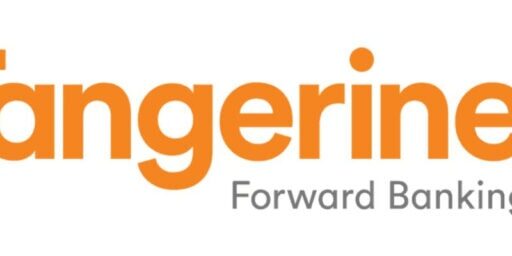Top Canadian Preferred Share ETFs
Preferred shares are an odd asset class. They aren’t quite equities, and they aren’t quite bonds. They are similar to equities in that they pay a dividend, and Canadian preferred shares are eligible for the dividend tax credit. Preferred shares are also traded on the stock market and while they are not as volatile as equities, they still trade at the mercy of the markets.
Preferred shares are similar to bonds in that they are sensitive to interest rates, and preferred shares have a number of classes or types (retractable, perpetual, callable etc). This means that when a company issues a class of preferred shares, like bonds, they can have an end date, a fixed or floating distribution rate (among other features).
In terms of safety of the dividend, it falls in between common shares and bonds. If a company decides to cut their dividend, then the common shares would lose their dividend before preferred shares are hit. It’s noteworthy to emphasize that companies can cut their preferred share dividends. However, if you pick preferred shares of companies that have a long history of increasing their common share class dividends, then the chances of the preferred share dividends being cut is reduced.
Anyway you look at it, the details can be a bit confusing and most investors are looking for an easy solution to take advantage of the yields. Best way to achieve this is by buying an ETF that holds a basket of preferred shares and flows the yield back to investors.
Top Canadian Preferred Share ETFs
1. BMO S&P/TSX Laddered Preferred Share Index ETF (Symbol: ZPR; MER: 0.45%; Net Assets: $822M; Holdings: 122)
This ETF follows the S&P/TSX Preferred Share Laddered Index. This index tracks Canadian rate reset preferred shares and uses a five year laddered structure where annual buckets are equal weighted and each bucket are market capitalization weighted. This is a similar concept to a GIC or bond ladder.
This ETF currently yields around 4.5%, coincidentally, all of the ETFs are very close in yield. In terms of liquidity, it is in second place where trading volume is slightly less than CPD listed below. Although ZPR and CPD (below) are very close, I picked the BMO product due to to a slightly lower MER.
2. iShares S&P/TSX Canadian Preferred Share Index (Symbol: CPD; MER: 0.50%; Net Assets: $1.4B; Holdings: 202)
This ETF tracks the S&P/TSX Preferred Share Index and is the largest and most liquid (highest volume) ETF of the bunch. This is a popular ETF because it is diversified, has the highest liquidity, and has a yield near the top of the group (similar to ZPR). However, the MER is a little higher than the other contenders in this group. Both CPD and ZPR are decent choices for preferred share exposure.
3. PowerShares Canadian Preferred Share Index ETF (Symbol: PPS; MER: 0.45%; Net Assets: $131M; Holdings: 50)
This ETF tracks the NASDAQ Select Canadian Preferred Share Index which is very heavy (60%+) in financial preferred shares (big banks etc). The bright side of this ETF is that it is among the cheapest with a MER of 0.45% and a yield that is close to CPD and ZPR. The downside is that it has the lowest liquidity of the group and low diversification with 50 holdings.
4. Horizons Active Preferred Share ETF (Symbol: HPR; MER: 0.55%; Net Assets: $213M; Holdings: only 10 displayed on website)
As the name suggests, this is an actively managed ETF that follows a set of investing rules. These rules include:
- Primarily invests in the preferred securities of Canadian issuers whose debt, generally, at a minimum, have an investment grade rating at the time of purchase.
- May also invest in preferred shares of companies located in the United States, fixed income securities of Canadian and U.S. issuers, including other income generating securities.
- May also invest in Canadian equity securities that have attractive dividend yields and exchange traded funds that issue index participation units that pay dividend income.
With a yield on HPR currently 0.20% lower than the three above, combined with a higher MER, low volume and low diversification, this ETF does not quite make the cut.
Final Thoughts
I can see how income investors are attracted to preferred shares due to their tax efficient dividend distributions and relatively low volatility in stable interest rate environments. Personally, I would use an ETF over purchasing an individual preferred share with my top picks being either ZPR or CPD.
Do you hold any preferred shares in your portfolio?
I've Completed My Million Dollar Journey. Let Me Guide You Through Yours!
Sign up below to get a copy of our free eBook: Can I Retire Yet?










Hi: I volunteer for bookkeeping with a charity, noticed that they had funds lying idle.Suggested them to invest in Preferred Shares but then it can get tricky to monitor them on a regular basis hence a Preferred Shares ETF as suggested above in the post.
Are there better options available, the funds currently sitting in GIC’s are not making much, I could think of Preferred Shares to make the money do more for the Charity.
Appreciate your suggestions.
Sayvari
HPR has outperformed all ETFs mentioned yet it was the least recommended due to cost. Active management in this space is required and Fiera Capital has proved to outperform the Pref Share Index market…Now is the time to buy them after
1) retail invetors have been punished
2) bond yields are near all time lows
3) you can get 3X the yield vs. a simlar rated 5 year corporate bond
4) this asset class (Canadian Preferred Shares) have not made money over the past 5 years…
Buy buyer beware, if we get negative yields or a CDN housing market crisis, these will be hammered. If you’re going to own them, sell them sometime before the next US Recession which will cause a CDN or global recession.
Since the beginning of the year, preferred ETFs have decreased significantly. Ie: CPD from the mid 16$ to the 14$ range. Yield is now around 5%.
how is this explained? Interest rates? And, is it a good time to increase one’s position?
Thoughts?
Eric
Sorry I meant ZPR…..
Small correction:
The 0.45% MER quoted for ZPF is the management fee, not the total MER (CPD has the same management fee, which becomes a 0.5% MER once taxes and ancillary costs are factored in).
BMO ETFs currently estimate ZPF’s MER at 0.49%, so it is it likely to be more or less exactly similar to that of CPD. Not a surprise when you consider they have the same management fee.
FYI –
http://canadiancouchpotato.com/2012/11/19/four-new-etfs-and-an-invitation/ discusses some additional differences between ZPR and CPD regarding the type of preferred shares each holds (rate reset vs perpetual).
Mr. Frugal, yes preferred share yields are much higher than GICs, but the risk is also higher as the principal is not guaranteed.
A GIC pays less than 2% while ZPR and CPD yeild about 4.5%. What is not to like!!!
Another disadvantage: sensitive to interest rate movements..
No pref for me. You don’t need them to find the holy grail of diversification.
If you are not a billionaire, or close to it, I would stick to simplicity with bonds, stocks and real estate.
But if you want to brag at the cocktail party, saying I own pref shares of BMO won’t get you far…